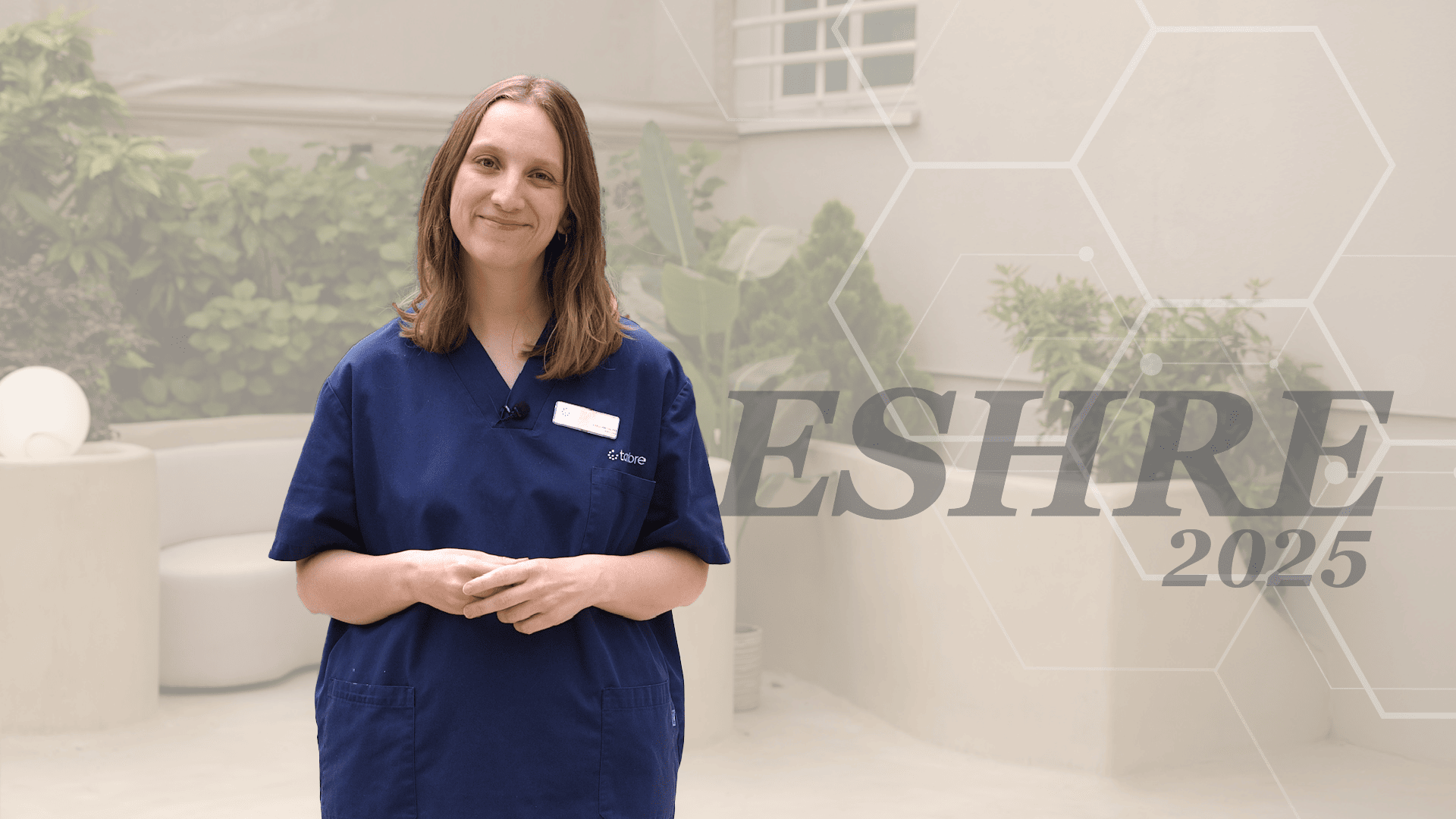blog tambre
Does embryo position influence treatment success? Tambre study for ESHRE 2025

Table of contents
One of the guiding principles at Tambre is that every detail matters.
Over the years, we have learned that in assisted reproduction, there is no such thing as an insignificant factor: every technique, every decision, every observation can make a difference in the final outcome.
With this philosophy in mind, we are proud to present at ESHRE 2025 our second study, which explores a subtle yet potentially decisive question: Does embryo position influence treatment success?
A parameter that may directly affect implantation and pregnancy rates, and therefore the overall success of the treatment.
What is the inner cell mass (ICM) and why is it important?
When an embryo reaches the blastocyst stage, it organises itself into two main parts:
- the trophectoderm, which will become the placenta, and
- the inner cell mass (ICM), which will develop into the baby.
For this reason, protecting the integrity and position of the ICM is essential in any manipulation of the embryo.
During treatments that involve PGT-A testing, a biopsy is taken from the trophectoderm, extracting a few cells for analysis while leaving the ICM untouched.
However, the position of the ICM inside the blastocyst can vary — and if it’s in a more exposed area, it may be more vulnerable during handling, potentially lowering implantation success.
The Tambre team asked a precise and clinically relevant question:
Does the ICM location influence success rates after embryo biopsy?
How was the study conducted?
This retrospective study analysed 174 embryos that underwent embryo biopsy for PGT-A at Tambre. Thanks to advanced time-lapse incubators (Geri, Genea-Biomedix), it was possible to record continuous video footage of embryo development.
The ICM position was assessed just before biopsy and categorised into three groups:
- Internal: completely inside the zona pellucida
- Middle: located in an intermediate position after hatching
- External: outside the zona pellucida
The study also examined the relationship between the ICM location and the site of Assisted Hatching (AH), a laser technique used to open the zona pellucida. The opening was made in the area corresponding to the first polar body, following standardised protocols.
What did the study reveal?
The results were both clinically insightful and statistically significant:
- Embryos with the ICM in an internal position showed the best outcomes:
63.4% total pregnancy rate and 57.9% clinical pregnancy rate. - Embryos with a middle-positioned ICM showed lower success:
50% pregnancy rate and 36.7% clinical pregnancy rate. - Embryos with an external ICM had the poorest results:
30.3% pregnancy and 27.3% clinical pregnancy.
Furthermore, when the ICM was located close to the AH opening, there was an increased risk of ICM protrusion, which could compromise its viability.
What does this mean for fertility treatments?
This study provides clear evidence that the ICM position is a critical factor when performing PGT-A.
Based on these findings, Tambre proposes the following best practices to protect the embryo’s potential:
- Always perform the zona pellucida opening at the polar body location, encouraging the ICM to remain on the opposite side;
- Carefully assess ICM position before deciding on the timing of the biopsy;
- Include ICM position as a new evaluative parameter before embryo transfer.
These recommendations could help optimise the results of PGT-A treatments and improve clinical outcomes for patients.
A new step toward clinical excellence
This research — conducted entirely by the Fundación Tambre team — adds a fresh layer of depth to embryo assessment, encouraging fertility specialists to go beyond traditional criteria.
At Tambre, we aim not only to select chromosomally normal embryos, but also those with the greatest implantation potential. Because our commitment to patients doesn’t stop in the lab:
it continues until their dream becomes a reality.
Tambre: fertility clinic in Spain where science meets human care.
Impact of inner cell mass position on embryo implantation potential: Control strategies
C. Rodríguez, S. Cortés, C. Andrés, MA. Chávez, JA. Horcajadas, L. Ortega

